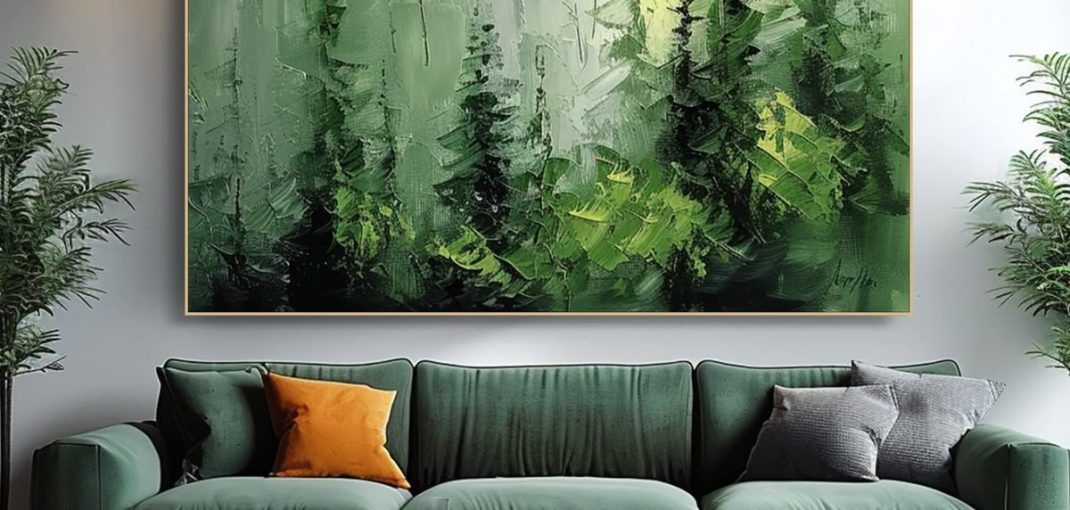Introduction
Canvas art has always held a special place in the world of creativity. From Renaissance masterpieces to modern abstract expressions, the transformation of a blank canvas into something visually and emotionally powerful remains one of the most moving aspects of visual storytelling. The title “From Blank to Beautiful — Canvas That Inspires” captures this journey perfectly. This article explores the artistic, cultural, personal, and commercial significance of canvas artwork. It also delves into the process of creation, the materials involved, and the evolving role of canvas art in contemporary spaces.
The Historical Roots of Canvas in Fine Art
Canvas as a medium gained prominence during the Renaissance, gradually replacing wooden panels due to its durability, flexibility, and lighter weight. Artists like Titian, Rembrandt, and Vermeer pioneered its usage, setting the foundation for future generations. These early works reflected not only aesthetic values but also religious, philosophical, and political ideas. The canvas became a stage where intellect and emotion converged.
Over time, canvas transitioned from a tool for elite commissions to a democratized platform for creative expression. By the 19th and 20th centuries, movements such as Impressionism, Cubism, and Surrealism elevated the status of canvas painting, allowing artists to experiment with perception, abstraction, and subconscious themes. Today, canvas remains an integral medium for both emerging artists and seasoned professionals alike.
The Creative Process: From Vision to Vivid Reality
Every piece of canvas art begins with a concept — a vision that gradually takes shape through sketching, color selection, layering, and refining. The artist becomes both storyteller and technician, guiding each stroke with intentionality. Acrylics, oils, and mixed media provide texture, vibrancy, and depth, enhancing the tactile and visual experience of the piece.
The beauty of canvas lies in its transformative nature. What starts as a stark, empty surface becomes a window into another world — an emotional echo or a conceptual reflection. From bold splashes of color to meticulous brushwork, each piece narrates something deeply personal yet universally resonant. Artists often describe the experience as therapeutic, meditative, and liberating.
Canvas as a Medium of Personal and Cultural Expression
Canvas offers a versatile platform for expressing identity, heritage, and inner emotions. Whether portraying indigenous traditions, urban experiences, or social commentary, canvas paintings allow artists to confront real-world issues with nuance and visual impact. Through portraiture, landscapes, or abstract symbolism, painters address themes of love, grief, resilience, hope, and transformation.
In multicultural societies, canvas serves as a bridge connecting diverse stories. It allows viewers to explore unfamiliar perspectives while finding common emotional ground. This sense of shared experience adds depth to the canvas’ inspirational power. The diversity of themes and techniques ensures that no two pieces are the same, fostering inclusivity and ongoing dialogue.
The Role of Canvas Art in Interior Design
Interior designers increasingly turn to canvas art to enhance the ambiance of a space. Unlike printed posters or digital screens, canvas offers warmth, texture, and authenticity. Its tactile surface and handcrafted quality make it an ideal focal point in both residential and commercial settings. Whether bold and expressive or soft and minimalistic, canvas art can define the mood of a room and influence its visual narrative.
Large-scale canvas works transform blank walls into immersive environments. Diptychs and triptychs offer dynamic compositions that draw the eye across dimensions. Personalized commissions add emotional value, reflecting the owner’s personality or experiences. In minimalist spaces, a single striking canvas can provide the perfect counterbalance, infusing character without overwhelming the surroundings.
Sustainable Practices in Canvas Creation
Modern canvas production is increasingly aligned with eco-conscious values. Sustainable sourcing of materials, non-toxic paints, and ethical labor practices are reshaping the industry. Artists and manufacturers alike are embracing organic cotton canvases, recycled frames, and water-based pigments. These efforts ensure that beauty is achieved without compromising environmental integrity.
Collectors and consumers are also more aware of the ecological impact of their choices. As sustainability becomes a core concern, the demand for responsibly made art continues to rise. This shift highlights a new kind of inspiration—one that champions the planet while celebrating creativity.
Canvas Art in the Digital Age
Digital innovation has not diminished the value of traditional canvas; rather, it has opened new avenues for distribution, customization, and audience engagement. Online platforms enable artists to share their work globally, receive feedback, and secure commissions. Print-on-demand services bring canvas art into more homes than ever before, bridging the gap between accessibility and exclusivity.
Augmented reality (AR) and virtual galleries further enhance the canvas experience. Buyers can visualize pieces in their spaces before purchasing. NFTs and blockchain technology also introduce fresh opportunities for artists to secure ownership rights and monetize their creations. Despite these tech advancements, the authenticity and tactile allure of real canvas art remain irreplaceable.
Emotional Connection and Lasting Impact
What sets canvas art apart is its emotional resonance. A powerful canvas can evoke memory, stimulate imagination, and even alter one’s perception. It has the capacity to calm, energize, or provoke thought—turning any room into a space for reflection and inspiration. Unlike fleeting digital content, a canvas painting endures, becoming part of daily life and personal history.
Collectors often form deep attachments to specific pieces, not just for their visual appeal but for the feelings they evoke. A canvas might remind someone of a pivotal moment, a loved one, or a place they long to return to. This emotional layering is what gives canvas its timeless charm and inspirational strength.
Conclusion: A Blank Canvas Holds Infinite Potential
From its humble beginnings to its enduring presence in modern homes and galleries, canvas continues to be a source of artistic revelation and emotional depth. It carries the potential to transform, to connect, and to inspire. Whether created by a seasoned painter or an emerging talent, each piece invites the viewer into a conversation—silent yet powerful, intimate yet far-reaching.
In a world often dominated by speed and distraction, canvas art offers a moment of pause. It reminds us that beauty can emerge from simplicity, that stories can be told without words, and that even the blankest of spaces hold infinite promise. Truly, from blank to beautiful, canvas art continues to inspire us all.




